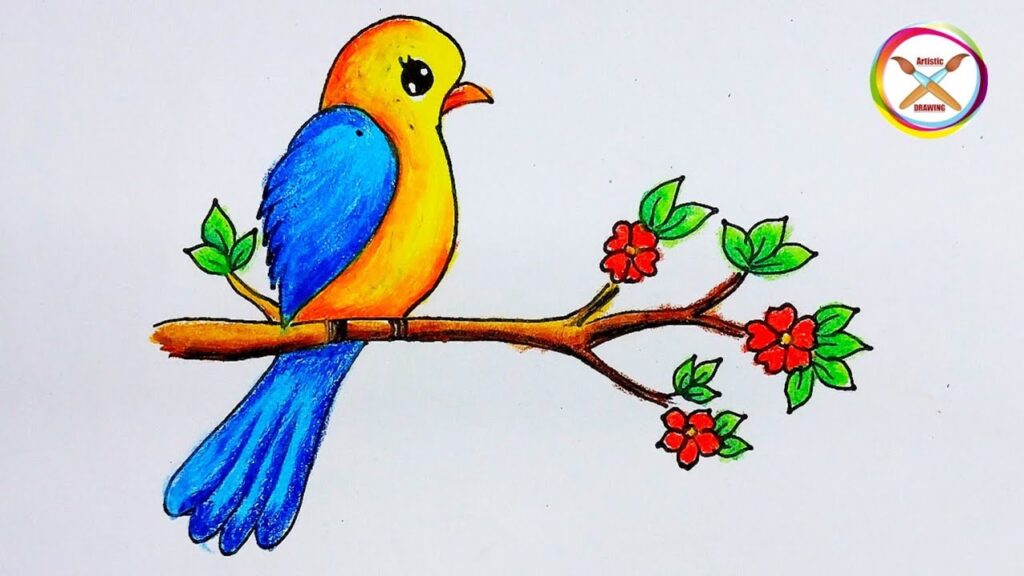How to Draw a Bird: A Comprehensive Guide
Drawing birds can be a delightful and rewarding artistic endeavor. Whether you are a beginner or an experienced artist, this guide will provide you with step-by-step instructions on how to draw various types of birds, techniques for improving your skills, and tips for adding detail and personality to your artwork. We will also include a FAQ section and a table summarizing key points related to bird drawing.
1. Understanding Bird Anatomy
Before you start drawing, it is essential to understand the basic anatomy of birds. This knowledge will help you create more accurate and realistic representations. Here are some key components of bird anatomy:
- Head: The head includes the beak, eyes, and feathers. Different species have distinct head shapes and sizes.
- Body: The body is typically oval-shaped and houses the bird’s organs. The size and shape can vary significantly among different bird species.
- Wings: Wings are crucial for flight and come in various shapes and sizes. Understanding wing structure will help you depict birds in different poses.
- Tail: The tail helps with balance and steering during flight. It can be long, short, or fan-shaped, depending on the species.
- Legs and Feet: Bird legs vary in length and thickness, and their feet are adapted for different functions, such as perching, swimming, or hunting.
2. Materials Needed
To draw birds, you will need some basic materials:
- Pencil: A good quality pencil for sketching.
- Eraser: To correct any mistakes.
- Paper: Any drawing paper will work, but thicker paper is recommended for colored pencils or markers.
- Colored Pencils or Markers: For adding color and detail to your drawings.
- Reference Images: Having pictures of birds can help you understand their features better.
3. Step-by-Step Instructions for Drawing a Bird
3.1. Drawing a Simple Bird
Step 1: Basic Shapes
Start by sketching basic shapes to outline the bird’s body. Use an oval for the body and a circle for the head.
Step 2: Add Guidelines
Draw a line connecting the head and body to indicate the neck. Add guidelines for the wings and tail.
Step 3: Outline the Shape
Refine the shapes to create a more defined outline of the bird. Add the beak, eyes, and tail feathers.
Step 4: Draw the Wings
Sketch the wings using curved lines. The wings should be proportionate to the body.
Step 5: Add Details
Add details such as feathers, texture, and facial features. Pay attention to the bird’s unique characteristics.
Step 6: Finalize the Drawing
Go over your pencil lines with a darker pencil or pen. Erase any unnecessary guidelines.
Step 7: Color Your Drawing
Use colored pencils or markers to add color to your bird. Consider the bird’s natural colors for a realistic effect.
3.2. Drawing a Specific Bird: The American Robin
Step 1: Basic Shapes
Start with an oval for the body and a smaller circle for the head.
Step 2: Add Guidelines
Draw a line for the neck and guidelines for the wings and tail.
Step 3: Outline the Shape
Refine the outline to create the robin’s shape, adding the beak and round belly.
Step 4: Draw the Wings
Sketch the wings, making them slightly curved and proportionate to the body.
Step 5: Add Details
Add details such as the robin’s signature orange belly, black head, and white eye ring.
Step 6: Finalize the Drawing
Outline your drawing with a darker pencil or pen and erase guidelines.
Step 7: Color Your Drawing
Use orange for the belly, gray for the body, and black for the head. Add texture to the feathers with shading.
3.3. Drawing a Bird in Flight
Step 1: Basic Shapes
Start with an oval for the body and two elongated shapes for the wings.
Step 2: Add Guidelines
Draw a guideline for the tail and head position.
Step 3: Outline the Shape
Refine the shapes to create the bird’s outline, ensuring the wings are spread wide.
Step 4: Add Wing Details
Sketch feather details on the wings, emphasizing the motion of flight.
Step 5: Finalize the Drawing
Outline your drawing and erase any unnecessary lines.
Step 6: Color Your Drawing
Choose colors that represent the bird species you are drawing. Use gradients to depict the light and shadow on the wings.
4. Techniques for Improving Your Bird Drawings
4.1. Observation
Spend time observing real birds or reference images. Pay attention to their shapes, colors, and movements.
4.2. Practice
Regular practice is essential for improving your drawing skills. Try drawing different species and poses.
4.3. Experiment with Styles
Explore various artistic styles, such as realism, cartoon, or abstract, to find your unique approach to drawing birds.
4.4. Use References
Utilize reference images to understand proportions and details better. Books, online resources, and nature documentaries can be valuable.
5. Summary Table of Key Points
| Step | Description |
|---|---|
| Basic Shapes | Start with simple shapes to outline the bird’s body. |
| Guidelines | Add lines to indicate the neck, wings, and tail. |
| Outline | Refine shapes to create a defined outline of the bird. |
| Details | Add features such as feathers, beak, and eyes. |
| Finalize | Go over lines with a darker pencil or pen and erase unnecessary guidelines. |
| Color | Use colored pencils or markers to add color and texture. |
6. FAQ Section
Q1: What type of paper is best for drawing birds?
A: Any drawing paper will work, but thicker paper is recommended for colored pencils or markers.
Q2: How can I improve my bird drawing skills?
A: Regular practice, observation of real birds, and using reference images can help improve your skills.
Q3: Are there specific techniques for drawing feathers?
A: Yes, use short, curved lines to create the texture of feathers, and pay attention to the direction they grow.
Q4: Can I draw birds from imagination?
A: Yes, but having a solid understanding of bird anatomy and features will help you create more convincing drawings.
Q5: What are some common mistakes to avoid when drawing birds?
A: Common mistakes include incorrect proportions, neglecting details, and not paying attention to the bird’s posture.
Q6: How do I choose colors for my bird drawings?
A: Observe real birds or reference images to choose accurate colors that represent the species you are drawing.
Q7: Is it necessary to use a reference image?
A: While not strictly necessary, reference images can greatly enhance your understanding of bird anatomy and details.
Q8: What tools can I use for shading in bird drawings?
A: You can use colored pencils, graphite pencils, or charcoal for shading to create depth and texture.
Q9: Can I draw birds in different styles?
A: Absolutely! Experiment with various styles, such as realism, cartoon, or abstract, to find your unique artistic voice.
Q10: Where can I find more resources for drawing birds?
A: You can find resources on bird anatomy and drawing techniques on websites like Wikipedia on Birds.
Conclusion
Drawing birds can be a fulfilling and enjoyable artistic pursuit. By understanding bird anatomy, practicing regularly, and using reference images, you can improve your skills and create beautiful representations of these fascinating creatures. Whether you are drawing a simple bird or a more complex scene, the techniques outlined in this guide will help you on your artistic journey. Remember to be patient with yourself and enjoy the process of creating art. Happy drawing!



